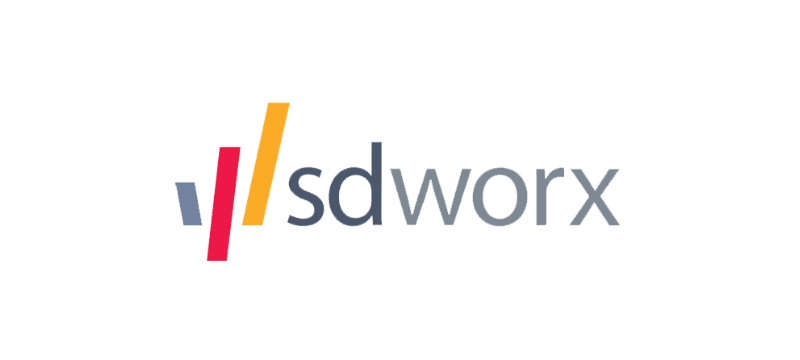Into the swing of digitalization: HR and employee experience
How HR Tech contributes to the digital aspect of Employee Experience.
Insights from industry leaders on their thoughts around the employee lifecycle.
A Q&A session that offered the live audience a chance to ask about their own Employee Experience projects and the things that are challenging them currently.


SD Worx ran a ginormous survey in June 2020. It covered 11 European countries and garnered 3,000 respondents. In many ways, the respondents reflected much of our perspectives of what the “workforce” of today looks like.
About 20% of respondents were part of organizations with 1,000 employees or more; 55% with under 100 employees; and then around 20% ranged between 101 to 1,000 employees.
Similarly, respondents came from across the breadth of their organizations, from CEOs to executive HR directors to functional HR managers, as well as being from a variety of industry sectors.
For the workforce, digitalization aims to optimize employee experience and satisfaction levels. But how are European companies performing toward these goals?
Watch this on-demand and see our industry-leading panelists have a really vigorous discussion based on this theme.
Reasons to watch on-demand:
- Ideas around the employee experience depend on our own definitions, and if, for example, we are taking into consideration things like the cultural, digital, and physical workplace aspects as well. But we can consider it to be everything that touches the employee and how those things interact.
- Hear from the CEO and founder of an organization that has been nominated no less than eight times as one of the great places to work, as well as two renowned HR tech industry commentators.
Your questions answered:
Q1. Executives appear to see digitization as a threat and a benefit in almost equal percentages. Is this why digital change is so difficult as there are equal parties for and against it?
Dr. Katherine Jones: In terms of “pros”, buyers are motivated in part by the Software-as-a-Service delivery method (now just called the “Cloud”) which creates advantageous price points for new applications, coupled with the elimination of on-premise infrastructure requirements. With the maturing adoption of employee and managerial self-service, companies are increasingly aware that their older software didn’t ever create an acceptable user experience. Newer technology focuses on mobile devices in the workplace, social tools for collaboration and community communication, AI, and sometimes even blockchain gives human capital professionals exciting and time-saving new options for workforce management. Furthermore, even during COVID, younger software companies are reaching maturity, developing a critical mass of customers, and creating new software options for buyers. On the “con” side: despite the apparent need for change, up to a shocking 70% of corporate initiatives are unsuccessful — this fact scares execs who are stuck in the “if it ain’t broke, don’t fix it” mode. A poorly run initiative can sap employee morale, reduce productivity, and increase employee turnover — and of course, new software is never inexpensive in its purchase, implementation, or long-term managing.
Q2. Isn’t employee engagement more like nursing a plant – you need to take great care looking after the initial planting before you are rewarded by seeing engagement grow?
Peters s’Jongers: I totally agree. In my opinion, planting the seeds is having a clear mission/vision/purpose. Make sure this is authentic and not invented by your employer branding agency. For me, this is the base. Without this fundament, all employee engagement efforts will be ‘window dressing’.
Q.3 How do you counter the “honeymoon effect” – like your infatuation with a crush that after a while you learn does have flaws? And how does digitalization play a role in this?
Dr. Katherine Jones: I put this all under “onboarding” — a process I see as going far into the work-cycle. Engagement of new hires needs to begin early in the recruiting process and it is absolutely critical that it is maintained during that crucial time between the acceptance letter and the first day of work. This is usually a place for technology – videos of the workplace or the team zooms with colleagues, (form-filling is of course all electronic); welcome-aboard messages by the CEO, and introduction to required learnings and compliance information. Then the electronic presentation of opportunities throughout these initial stages, (and in fact, throughout the rest of the employee’s employment) with internal and external learning/courses available, a reminder of corporate perks (do they know your company offers pet insurance, for example?), news about diversity initiatives, equity successes, and even the corporate baseball team – the more they know about what is going on- even remotely in COVID-19 – is engaging. And don’t forget your rewards and recognition programs, even if it is just an employee of the month “atta girl” message to all. The research I did found that high-impact organizations are able to reduce costs, engage new hires, establish organization-wide consistency, and extend their virtual onboarding programs through the use of technology.
Q.4 Quite often companies try to digitalize the onboarding process and minimize in-person connection with an employee within 1-st day. How do you balance that and what are your tips for great 1st day employee experience?
Peter s’Jongers: Personal contact is key! Don’t forget that genuine and personal attention is the new currency on the work floor. Remember your first day at school or even university. How grateful we were when somebody talked to us. Let me share a very practical tip. Something that really works for Protime: the very first day of a newbie we make sure that she/he is picked up by car by a colleague. Somebody who is not working in her/his new team. This existing colleague will drive the newbie to her/his first day at the office. In the car, they have a conversation about Protime and when arriving, the newbie will be escorted to HR by the colleague. So simple but very powerful!
Q.5 Now with COVID, work from home has become so common but will flexi-time ever become commonplace?
Dr. Katherine Jones: I wonder if employers even realize that working from home really is almost flexi-time, in that people are often breaking up their day in logical ways (whilst still getting the job done) to accommodate kids and other real-world work at home activities…. but to your point, I think the majority of companies seem locked into their industrial revolution patterns in shift management, albeit requiring knowledge workers to schedule calls with Asia pre-dawn and with China in the middle of the night…. for hourly workers and healthcare workers, many hiring management programs include the ability to pick the time the employee wants to work – by days, weekends, hours, etc. So these programs themselves recognize the need for flexible time scheduling as a talent acquisition requirement. I anticipate this will only increase, though many employers may miss the boat totally.
Q.6 Why did people feel like it was necessary to put time on work? if we can understand the need to do this then we can also move forward from this and perhaps find a way to discard this again?
Peter s’Jongers: Flexibility is key of course, but also, make sure that you have all data to work pro-actively as an HRD. Compare this with a sports tracking watch. Nobody was wearing a heart rate monitor back in the 90s but today no athlete can imagine to go out running without one…. Although you are not running faster with that watch around your wrist, it only gives you data and that data gives you the flexibility to make the right decisions, maybe you have to slow down, maybe you can go faster. Pro-active. It is this kind of self-steering and self-coaching tool that makes you train better. And this can be used everywhere. For example, if you see that one of your team members is working 50h every week to get things done, you can check on him/her if this is OK. Does (s)he need help? Training? Is this temporary? Don’t wait till the next burn-out/bore-out. Time data can be very useful data in a knowledge-worker environment because it tells you something about the time needed to reach KPI’s/goals/targets. It is all about giving people the possibility to create an environment in which they can thrive and where they have the opportunity to choose for themselves what they need to perform at their best. It’s not about the last minute that counts, it’s about tracking a work-life balance.
Q.7 How do I build a case for C-level to focus on employee experience? are there any particular things I should consider?
Dr. Katherine Jones: Here are 4 quick benefits that can sway an exec:
- 1) More engaged, productive employees. Disengaged employees can cost companies billions of dollars each year due to repercussions such as lower productivity and profitability and increased absences. In contrast, engaged employees are more productive and bring other advantages such as improved retention rates and workplace safety.
- 2) Lower absenteeism rates. Unhappy employees are more likely to be absent from the workplace, in turn negatively affecting morale, productivity, and finances. Happy employees have lower rates of absenteeism.
- 3) Increased quality of work. Happiness levels influence job success more than IQ or skill set, according to research from Harvard University psychologist and happiness expert Shawn Achor and others. For example, a “happy” brain sees more possibilities and is more creative.
- 4) Improved customer relations. (This is really important). The employee experience affects all areas of the business, including customer experience. Indeed, many industry experts, myself included, believe customer experience is a direct result of employee experience. Happy employees are more likely to convey better moods and emotions while interacting with customers. They also tend to exhibit more dedication to and understanding of products and services, which in turn enables them to give better support to customers.
Watch On Demand
"*" indicates required fields
Contact Us
"*" indicates required fields
Partner with UNLEASH
"*" indicates required fields
